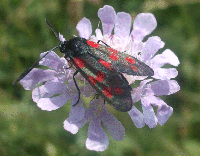|
January |
Hard weather movements quite common with
the arrival of birds from the Continent |
Departure of birds in severe weather.
Also random movements of lapwings, chaffinches, thrush species, skylarks,
woodpigeons and wild geese |
|
February |
Local redistribution of tits and
stonechats. Return of razorbills, guillemots and gannets to
islands and seacliffs. |
Early departure of redwings |
|
March |
Manx shearwaters return. Kittiwakes
and puffins back at seacliffs. Arrivals of chiffchaff, sand
martin, wheatear, lesser black-backed gull and early ring ouzel, stone
curlew and garganey. Golden plover back on hills. |
Redwings and fieldfares assemble.
Bramblings and chaffinches on move with some grey wagtails. Mixed
flocks of wading birds break up. Departure of some goldcrests. |
|
April |
Main arrival of willow warbler, blackcap,
garden warbler, whitethroat, sedge warbler, Savi's warbler, whinchat,
black redstart, redstart, nightingale, swallow, house martin, wryneck,
cuckoo, yellow wagtail, tree pipit, osprey, common and artic terns,
great skua, corncrake, little ringed plover and avocet. Storm and
Leach's petrels back to islands. |
Departures of redwings, fieldfares, snow
buntings, chaffinches, wildfowl and waders. Passages of black-tailed
godwits, green sandpipers and Greenland wheatears. |
|
May |
Main arrival of wood warbler, grasshopper
warbler, reed warbler, lesser whitethroat, turtle dove, swift, nightjar,
pied and spotted flycatchers, red backed shrike, hobby, common
sandpiper, dotterel, arctic skua, Sandwich tern, quail. |
Late fieldfares and bramblings leave. Passages
of spoonbill, black tern, curlew, whimbrel. bar-tailed godwits, greenshank,
spotted redshank, dunlin, ruff, purple sandpiper, turnstone, wood sandpiper,
green sandpiper, grey plover, sanderling, knot, Temminck's and little tern |
|
June |
Arrival of marsh warbler and red-necked
phalarope. |
Passage of great shearwater, woodchat shrike
and honey buzzard. Continental juvenile lapwings on the move. |
|
July |
Dispersal of young birds |
Adult cuckoos move south and Savi's warblers
leave. Flocking begins. Moult migration of shelduck for
Heligoland Bight and Bridgewater Bay. |
|
August |
Black headed and common gulls arrive |
Swift and adult cuckoos depart south.
Some warblers (especially chiffchaff, willow warbler) move south. Pied
flycatchers on the move. Puffins and other auks abandon sea cliffs and
golden plover and dunlin the moorlands. Passage of wood sandpipers and
other warblers, lesser black-backed gulls and white wagtails. |
|
September |
Arrival of pink-footed geese, mallard,
wigeon, shoveller, pochard, tufted duck. Also early thrushes,
goldcrests and snow buntings arrive. |
Swallows and house martins depart south with
turtle doves, nightingales, tree pipits and other summer visitors.
Passage of little stints, curlew sandpipers, green sandpipers and other
waders. Inland movements of gulls, skylarks, meadow pipits, wagtails. |
|
October |
Redwings and fieldfares arrive with hooded
crows, shorelarks, chaffinches, bramblings, siskins, redpolls,
continental starlings, rough legged buzzards, whooper swans, bean, brent
, barnacle and grey lag geese, goldeneye, long-tailed ducks, jack snipe,
woodcock and short-eared owls. |
Heavy inland passage of birds and some rarities
and vagrants. |
|
November |
Fulmars back at ledges. Late redwings
and fieldfares arrive with Bewick swans, smew and an occasional great
grey shrike, water or Richard's pipit. Winter-visiting divers and
grebes. |
Autumn movements die away. |
|
December |
White-fronted geese arrive. |
Sometimes hard weather movements. |
|
